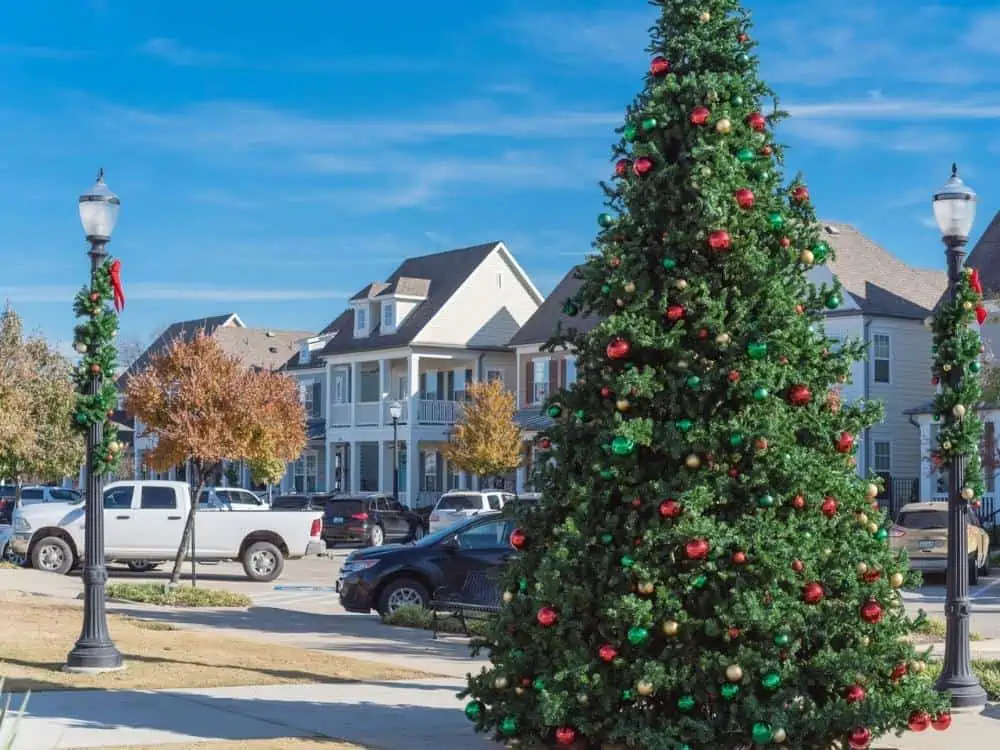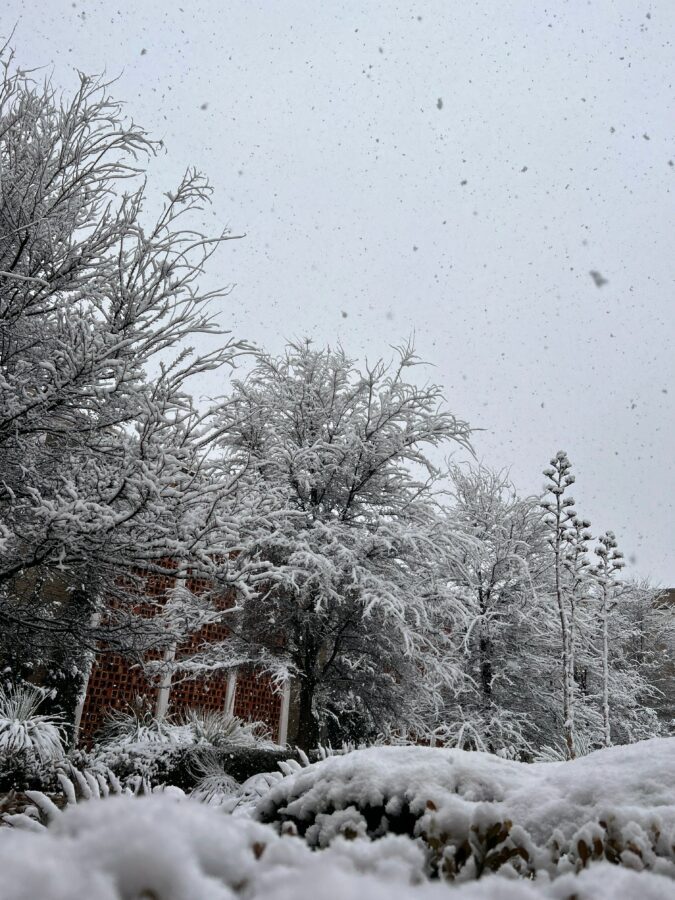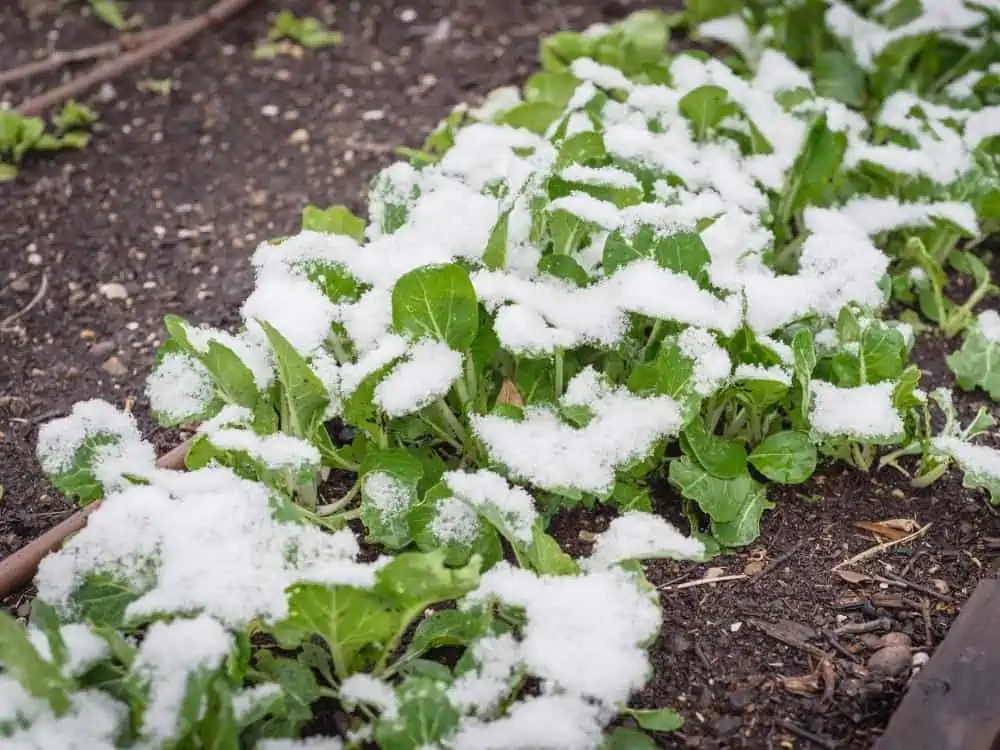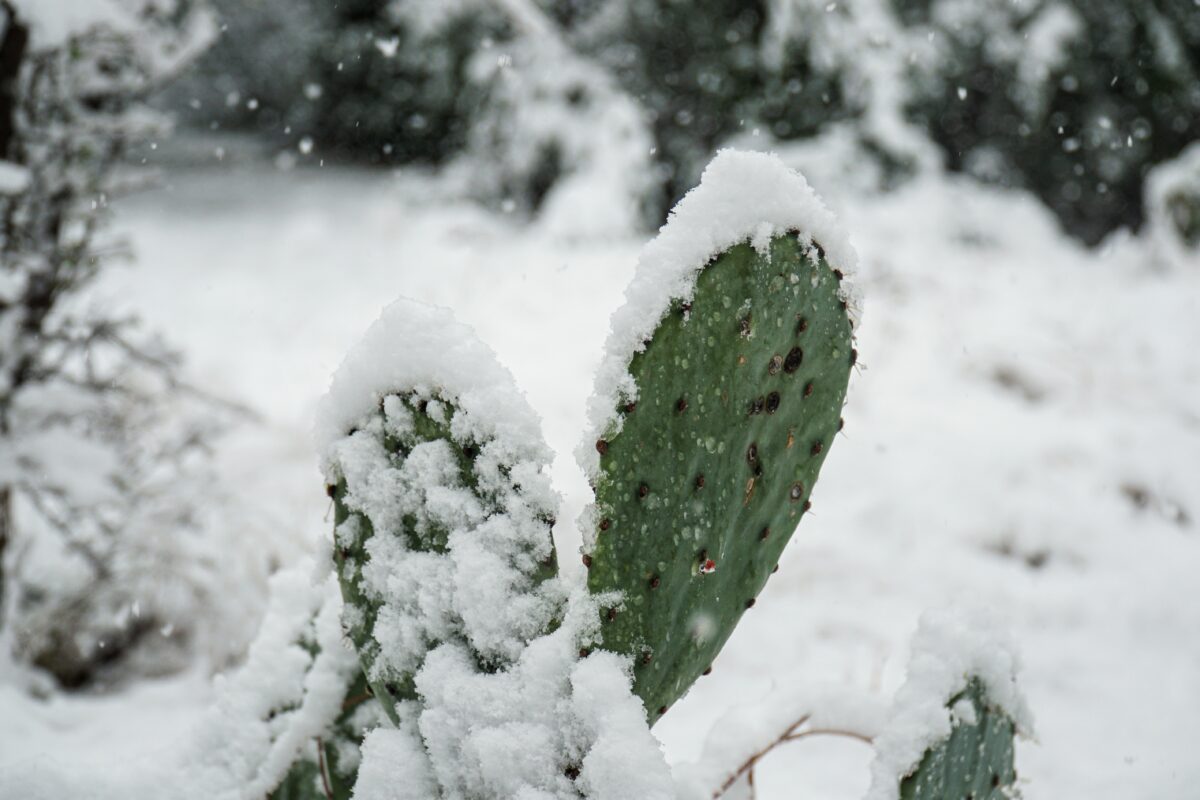Share the post "When Texas Gets a Taste of Winter: A Cold Season Breakdown"
When we talk about Texas, your mind automatically begins to imagine western cowboys and horses wandering a great desert. What if we tell you that modern-day Texas isn’t as you see it in the 80s movies? Less than 10% of Texas is desert, and modern cities and green areas populate the rest. That, however, doesn’t stop Texas from getting short and dry winters.
So, when does it start getting cold in Texas? The official winter starts around late December or early November and lasts less than three months. But when does it start to get cold? How cold does it get? Does it snow or rain? And if so, where?
Key Points:
- Winter in Texas officially starts in late December or early November and lasts for less than three months.
- The southeastern regions of Texas, near the Gulf of Mexico, tend to get colder first due to the sea breeze.
- The lowest recorded temperature in Texas was -8°F in 1899, but the average cold temperature is around 45°F.

When Does It Start Getting Cold in Texas?
Despite having the official winter calendar listed from late December to late February, the cold weather starts mid to late November and ends in early February.
It often gets colder in certain areas over others as well. The state’s southeastern regions are on the coast of the Gulf of Mexico and usually get colder first.
Even in summer, those areas have colder air than the rest of the state. Water absorbs heat a lot slower than land. The sea breeze is often responsible for that.
When the air hits the surface of the water, it cools down. The cooler water also increases the pressure of the air that hits it. The cool air would then move from high-pressure (open water) areas to low-pressure (land.)
That phenomenon is the sea breeze, which often makes the shore areas of Texas colder in winter.
The nine lucky counties to have that sea breeze are:
- Kleberg
- Nueces
- San Patricio
- Kenedy
- Aransas
- Bee
- Brooks
- Jim Wells
- Refugio

Cold Temperatures in Texas
The lowest ever recorded temperature in Texas was -8°F in 1899. Don’t let that give you the wrong impression, though. Texas has an average cold temperature of 45°F.
On the other hand, we don’t seem to be too far from reaching those -8°F. On February 16th, 2021, a record low temperature was recorded at Dallas/Fort Worth International Airport. The temperature went down to a chilling -2°F.
That extreme cold led to widespread power outages (more on that soon) in Dallas and other parts of the state. Texas isn’t used to those low temperatures.
Here’s how the temperature fluctuates in Dallas, Texas, throughout the winter. The rest of the state usually isn’t too far away from those statistics.
| Month | Average High | Average Low | Mean | Record High | Record Low |
| December | 57°F | 39°F | 48°F | 89°F | -1°F(1989) |
| January | 55°F | 36°F | 46°F | 88°F | 2°F (1949) |
| February | 61°F | 41°F | 51°F | 95°F | -8°F (1899) |
Monthly Temperatures in Texas
| Month | Dallas | Houston | San Antonio | Austin |
|---|---|---|---|---|
| January | 47°F (8°C) | 53°F (12°C) | 52°F (11°C) | 50°F (10°C) |
| February | 51°F (11°C) | 57°F (14°C) | 57°F (14°C) | 54°F (12°C) |
| March | 60°F (16°C) | 65°F (18°C) | 66°F (19°C) | 63°F (17°C) |
| April | 68°F (20°C) | 73°F (23°C) | 75°F (24°C) | 71°F (22°C) |
| May | 76°F (24°C) | 81°F (27°C) | 82°F (28°C) | 78°F (26°C) |
| June | 84°F (29°C) | 88°F (31°C) | 90°F (32°C) | 86°F (30°C) |
| July | 88°F (31°C) | 92°F (33°C) | 94°F (34°C) | 90°F (32°C) |
| August | 87°F (31°C) | 92°F (33°C) | 94°F (34°C) | 89°F (32°C) |
| September | 80°F (27°C) | 86°F (30°C) | 88°F (31°C) | 83°F (28°C) |
| October | 69°F (21°C) | 77°F (25°C) | 80°F (27°C) | 74°F (23°C) |
| November | 57°F (14°C) | 66°F (19°C) | 68°F (20°C) | 63°F (17°C) |
| December | 48°F (9°C) | 56°F (13°C) | 56°F (13°C) | 52°F (11°C) |
Note that these temperatures are averages and can vary depending on location and year.
Snow in Texas
To cut to the chase, snow isn’t as common in Texas as in other northern states like New York. This is probably because Texas is one of the closest states to the equator. The other state is Florida.
The equator is an imaginary line that splits the Earth horizontally into two parts. The closer you are to the equator, the hotter your summers will be and the less cold your winters will be.
The Sun’s rays are the reason behind that phenomenon. They hit the Earth more directly at the equator. The further you go away from it, the more indirect sun rays you get and the less effective the rays become.
That being said, Texas has still seen snow occasionally. It even got extreme on rare occasions.

Famous Texan Snowstorms
On December 20, 1929, Texas saw its biggest snowstorm. It started as mild 2-inch snow on the 19th and then intensified extensively the following day.
The Historic Texas Snowstorm hardly lasted 24 hours, but the results were extraordinary. A large chunk of eastern Texas was covered in a 12-inch show. Clifton and Hillsborough counties had it much worse than others, with around 25 inches of snow!
A more recent storm, unofficially known as “Winter Storm Uri” hit Texas on February 13, 2021. Over 10 million people in Texas and Mexico experienced blackouts. The storm caused over $190 billion worth of damage and, unfortunately…some fatalities.
Winter Rain in Texas
Surprisingly, Texas gets more rain throughout the year than in winter. The Texan winter is often dry and has more tendency to snow than it has to rain.
May is said to be the wettest month in Texas, while August is often the driest. December, January, and February don’t often see much rain, although it’s possible sometimes.

Preparing For Winter
When it starts getting cold in Texas, there are several things you can do to stay warm and comfortable. Here are some tips:
- Dress in layers: The temperature in Texas can fluctuate throughout the day, so it’s essential to dress in layers that you can easily remove or add as needed.
- Use a space heater: If you’re feeling chilly in your home, consider using a space heater to warm up your room. Just follow safety precautions and keep the heater away from flammable objects.
- Seal up drafts: Check for drafts around windows and doors, and use weatherstripping or caulk to seal them up. This can help keep the cold air out and the warm air in.
- Use a humidifier: Running a humidifier can help add moisture to the air, making it feel warmer and more comfortable.
- Enjoy outdoor activities: Just because it’s cold outside doesn’t mean you have to stay cooped up indoors. Bundle up and enjoy outdoor activities like hiking, camping, or visiting a local park.
- Prepare your car: Make sure your car is ready for cold weather by checking your antifreeze levels, changing your oil, and ensuring your tires are properly inflated.
By following these tips, you can stay warm and comfortable when it gets cold in Texas.
First Frost in Texas and Advice for Gardeners
The first frost in Texas can vary depending on the location, but typically occurs in November or December. According to the Old Farmer’s Almanac, the first frost date for Dallas, Texas, is November 22, while the first frost date for Houston, Texas, is December 11. Gardeners in Texas should be aware of the first frost date in their area and take steps to protect their plants from the cold.
Here are some tips for gardeners in Texas when preparing for the first frost:
- Harvest ripe produce: Before the first frost, harvest any ripe produce from your garden. This can include tomatoes, peppers, and other vegetables that are ready for picking.
- Cover plants: Covering plants with blankets or tarps can help protect them from the cold. Be sure to remove the coverings during the day to allow sunlight in.
- Water plants: Watering your plants before a frost can help protect them by increasing the moisture in the soil. This can help keep the roots warm and prevent damage to the plant.
- Move plants indoors: Consider moving them indoors before a frost if you have potted plants. This can help protect them from the cold and keep them healthy throughout the winter.
- Consider planting cold-hardy crops: If you’re planning a winter garden, consider planting cold-hardy crops such as kale, collard greens, and spinach. These plants can withstand colder temperatures and continue to grow throughout the winter.
By taking these steps, gardeners in Texas can protect their plants from the first frost and ensure a healthy garden throughout the winter.
First Frost Table for Cities in Texas
Sure, here’s a table of the average first frost dates for selected cities in Texas:
| City | Average First Frost Date |
|---|---|
| Amarillo | October 23 |
| Lubbock | November 3 |
| Wichita Falls | November 9 |
| Abilene | November 13 |
| Midland | November 15 |
| San Angelo | November 16 |
| Dallas | November 22 |
| Austin | December 2 |
| Houston | December 11 |
| Brownsville | January 2 |
Note that these dates are averages and can vary from year to year. Gardeners in Texas should be aware of the first frost date in their area and take steps to protect their plants from the cold.
Cold in Texas: FAQs
What month does it get cold in Texas?
January is typically the coldest month of the year for Texans. The coldest areas are usually the southwestern areas with a cold sea breeze. The Panhandle region, however, often experiences more cold than average despite being the farthest from the Gulf of Mexico.
What is the coolest city in Texas?
According to the heat index, Fort Worth has the coldest average temperatures in Texas. The reason is probably its altitude, as it’s elevated 653 ft above sea level. Fort Worth is also more likely to get snow than other parts of Texas, with a height that reaches 7 inches sometimes.
What is the rainiest city in Texas?
Houston seems to be the undisputed rainy king of Texas. It can get more rain in one week than a combination of other Texan cities all year. Fort Worth is the second rainiest city, followed by Dallas.
How common is snow in Texas?
Snow in Texas isn’t common in general. If snow does appear in Texas, it’s more common in the northwestern areas. The average snow height in Texas is less than half an inch. The snow hardly turns to ice and mostly melts in a day or two.
Share the post "When Texas Gets a Taste of Winter: A Cold Season Breakdown"
Christian Linden is a seasoned writer and contributor at Texas View, specializing in topics that resonate with the Texan community. With over a decade of experience in journalism, Christian brings a wealth of knowledge in local politics, culture, and lifestyle. He holds a Bachelor's degree in Communications from the University of Texas. When he's not writing, Christian enjoys spending weekends traveling across Texas with his family, exploring everything from bustling cities to serene landscapes.











